Results 10,561 to 10,570 of 12096
Thread: Anandtech News
-
05-12-20, 10:10 AM #10561
Anandtech: Amazon Makes Graviton2 AWS Instances Available
Following the Graviton2's first official announcement back in December, as well as the preview period that has been going on for several months now, Amazon has today publicly launched new m6g instanced based on their new in-house Arm platform.
We had a more in-depth look into the Graviton2 in our analysis article back in March, and the Amazon silicon and Arm's Neoverse-N1 cores certainly delivered on its promises, showcasing competitive performance both in single-threaded as well as multi-threaded scenarios. Most importantly, on AWS, the m6g instances delivered better cost efficiency compared to competing Intel and AMD-based instances.
The new m6g instances in Amazon's main global regions, including US East (N. Virginia), US East (Ohio), US West (Oregon), Europe (Ireland), Europe (Frankfurt), and Asia Pacific (Tokyo) starting today.
Related Reading:- Amazon's Arm-based Graviton2 Against AMD and Intel: Comparing Cloud Compute
- 80-Core N1 Next-Gen Ampere, ‘QuickSilver’: The Anti-Graviton2
- Amazon Announces Graviton2 SoC Along With New AWS Instances: 64-Core Arm With Large Performance Uplifts
- Arm Announces Neoverse N1 & E1 Platforms & CPUs: Enabling A Huge Jump In Infrastructure Performance
More...
- Amazon's Arm-based Graviton2 Against AMD and Intel: Comparing Cloud Compute
-
05-12-20, 03:39 PM #10562
Anandtech: NVIDIA Teases Next-Gen GPUs, DGX Hardware Ahead of GTC 2020 Keynote
Among the many events delayed or canceled due to the current coronavirus pandemic is NVIDIA’s annual GPU Technology Conference. After a false start, the spring event was rescheduled as an all-digital affair, centered around CEO Jensen Huang’s annual keynote. And with that keynote set to be broadcast on Thursday morning, the company has posted a short video teasing some of the new hardware we’re presumably going to see in the keynote.
In the video, titled “What’s Jensen been cooking”, Huang pulls out a rather heavy-looking 8 GPU baseboard from his oven, placing it on his kitchen counter. Calling it “the world’s biggest video card”, the board has apparently “been cookin’ for a while.”
With no other context provided in the 27 second video, the board looks a great deal like an updated version of the baseboards used in NVIDIA’s DGX and HGX compute servers. And with NVIDIA’s next-generation compute architecture and GPU widely expected to be unveiled at the event, we are almost certainly looking at a server board full of NVIDIA’s next-gen accelerators.
No doubt we’ll be seeing and hearing a lot more about this board and the GPUs on it come Thursday, where NVIDIA's keynote starts bright and early at 6am PT.
More...
-
05-13-20, 09:15 AM #10563
Anandtech: Dell Revamps XPS 15 And Brings Back XPS 17
The XPS lineup from Dell has been a resounding success and was the first laptop to feature the ultra-thin bezels that have defined the modern laptop. For 2020, Dell is refreshing the XPS 15 with an all-new design and bringing back the XPS 17 after almost ten years. Both look to set the bar that other manufacturers will try to attain. And thanks to the thin display bezels, both laptops are much smaller than their names would imply.
XPS 15Dell XPS Models Model XPS 15 XPS 17 CPU Intel Core i5-10300H
4C/8T 4.5 GHz
Intel Core i7-10750H
6C/12T 5.0 GHz
Intel Core i7-10875H
8C/16T 5.1 GHz
Intel Core i9-10885H
8C/16T 5.3 GHzGPU NVIDIA GTX 1650 Ti 4BG NVIDIA GTX 1650Ti 4BG
NVIDIA RTX 2060 6BGRAM 8-64 GB DDR4-2933 (2 SO-DIMM) Storage 256 GB to 2 TB PCIe SSD Display 15.6-inch 1920x1200 60 Hz
500 nits 1650:1 contrast sRGB
3840x2400 60 Hz Touch
500 nits 1600L1 contrast HDR 400
100% Adobe RBG 94% P317.3-inch 1920x1200 60 Hz
500 nits 1650:1 contrast sRGB
3840x2400 60 Hz Touch
500 nits 1600L1 contrast HDR 400
100% Adobe RBG 94% P3Audio Waves Maxx Audio
Waves Nx 3D Audio
Quad-Speaker
1.5W x 2 Tweeter
2.5W x 2 WooferPorts 2 x USB-C Thunderbolt 3
1 x USB Type-C 3.1
SD Card Reader4 x Thunderbolt 3
SD Card SlotNetworking Killer Wi-Fi 6 AX1650 Battery 56 Wh / 86 Wh
USB Type-C 90W to 130W charger56 Wh / 97 Wh
USB Type-C 90W to 130W chargerDimensions 345 x 230 x 18 mm
13.57 x 9.06 x 0.71 inches374 x 248 x 19.5 mm
14.74 x 9.76 x 0.77 inchesWeight 1.83 to 2.05 kg
4 to 4.5 lbs2.11 to 2.51 kg
4.65 to 5.53 lbsStarting Price USD $1,299.99 $1,499.99
Dell’s XPS 15 has been the workhorse of their lineup, offering significantly more CPU and GPU performance than the XPS 13 thanks to 45-Watt CPUs and powerful discrete GPUs. Dell’s redesign adds new options for the CPU and GPU, and updates the design to their new take on the XPS, featuring the same InfinityEdge display, but now in a taller 16:10 aspect ratio which matches the already updated XPS 13.
Powering the new XPS is Intel’s new Coffee Lake H-Series, with a 45 Watt TDP. Dell is offering Core i5, i7, and i9 models. On the GPU side, Dell is now offering the NVIDIA GeForce GTX 1650 Ti 4BG model, which is in-line with how NVIDIA has revamped their mobile GPU lineup for the year. Customers will be able to add up to 64 GB of DDR4-2933 RAM as well, thanks to the two SO-DIMM slots, and storage options are all PCIe SSDs from 256 GB to 2 TB.
Dell is also adding a brand-new cooling system, with a vapor-chamber cooling system and increased airflow. Any additional cooling will be welcome in a system that is as thin and light as the XPS line is.
One of the hallmarks of the XPS lineup is the InfinityEdge display, and for 2020’s redesign Dell has created a laptop with a 92.9% screen-to-body ratio, while still managing to fit a 720p webcam and dual microphones in the top bezel. Display options on the XPS 15 are familiar, but thanks to the 16:10 aspect ratio, should be more usable for creating and working. The base display option is a 1920x1200 100% sRGB IPS panel with a 1650:1 contrast ratio and 500 nits of brightness. If you need more, Dell also offers a 3840x2400 touch display with HDR 400, 100% Adobe RGB gamut coverage, and 94% P3 Gamut.
Battery life estimates from Dell are somewhat insane. The optional 86 Wh battery can provide up to 25 hours of battery life with the lower resolution display, which should mean even the UHD display option should offer all-day battery life.
Dell has also added 3D sound with Waves Nx 3D Audio, with tuned speakers, or Waves NX headphone tracking to adjust the direction of sound to suit your head movement.
Dell has moved entirely to USB-C for this generation, with two Thunderbolt 3 ports and one USB only, and Dell includes several USB-C adapters.
The new XPS 15 starts at $1299.99 and availability will be this week.
XPS 17
After almost ten years away, Dell is bringing back the XPS 17, thanks to customer demand for larger displays. But thanks to the InfinityEdge display, the new XPS 17 is very compact, with Dell stating it is smaller than 48% of the 15-inch notebooks on the market today. Thin bezel designs look amazing, but the ability to pack a large screen into a much smaller chassis is one of the best reasons to opt for a notebook like this.
The new XPS 17 is also Dell’s most powerful XPS ever, with the same CPU choices as the XPS 15, being Intel Coffee Lake H Core i5, i7, and i9 models, but with an even larger GPU option. The XPS 17 ships with the same NVIDIA GeForce GTX 1650 Ti as the XPS 15 in its base trim, but customers can also opt for the much more powerful NVIDIA RTX 2060 if they need even more compute. There are two SO-DIMM slots for up to 64 GB of RAM, and customers can purchase up to 2 TB of PCIe storage when configuring the device.
On the display side, the new XPS 17 features the same 16:10 aspect ratio as the rest of the XPS lineup, with base trim offering a 1920x1200 60 Hz display with 500 nits of brightness and 1650:1 contrast for it’s sRGB gamut. Or, like the XPS 15, you can opt for a high DPI panel, with a 3840x2400 resolution and touch. The higher pixel count also includes HDR 400 certification and wide-color gamut support with 100% Adobe RGB and 94% P3.
The larger laptop gets an even larger battery, with either 56 Wh or 97 Wh options. Dell has also added more Thunderbolt 3, with four Thunderbolt 3 ports.
The new XPS 17 looks to be a worthy addition to the lineup. It will be available this summer, with prices starting at $1499.99.
Source: Dell
More...
-
05-13-20, 09:15 AM #10564
Anandtech: Dell Gaming Updates: Alienware Goes Super And Dell Adds Ryzen
Today Dell is refreshing the better portion of their gaming lineup, moving to the latest Coffee Lake processors on both their Dell-branded Gaming laptops, as well as their Alienware lineup. Graphics also get a bump with NVIDIA’s new Super RTX GPUs. For those looking for AMD powered systems, Dell is also officially announcing the G5 15 SE with AMD Ryzen 4000 and Radeon RX 5600M graphics.
Alienware 2020 Update Model Area-51m R2 m15 R3 M17 R3 CPU Intel Core i7-10700 octa-core 4.8 GHz
Intel Core i7-10700K octa-core 5.1 GHz
Intel Core i9-10900 deca-core 5.2 GHz
Intel Core i9-10900K deca-core 5.3 GHzIntel Core i5-10300H Quad-Core 4.5 GHz
Intel Core i7-10750H Hex-Core 5.1 GHz
Intel Core i9-10980HK Octa-Core 5.3 GHzIntel Core i5-10300H Quad-Core 4.5 GHz
Intel Core i7-10750H Hex-Core 5.1 GHz
Intel Core i9-10980HK Octa-Core 5.3 GHzGPU NVIDIA Options:
GTX 1660 Ti 6GB
RTX 2060 6GB
RTX 2070 Super 8GB
RTX 2080 Super 8GB
AMD Option:
Radeon RX 5700M 8GBNVIDIA Options:
GTX 1650 Ti 4GB
GTX 1660 Ti 6GB
RTX 2060 6GB
RTX 2070 8GB
RTX 2070 Super 8GB
RTX 2080 Max-Q 8GB
AMD Option:
Radeon RX 5500MNVIDIA Options:
GTX 1650 Ti 4GB
GTX 1660 Ti 6GB
RTX 2060 6GB
RTX 2070 8GB
RTX 2070 Super 8GB
RTX 2080 8GB
AMD Option:
Radeon RX 5500MRAM 8-64GB DDR4-2933
16-32BG DDR4-3200 XMP8-32 GB DDR4-2666 8-32 GB DDR4-2666 Storage 256-2TB PCIe SSD
RAID0 up to 4TB
RAID0 Plus up to 4TB plus 1TB HDD or SSD256-2TB PCIe SSD
RAID0 Optiona up tol 4 TB
RAID0 Plus Optional up to 4TB plus 512GB PCIe256-2TB PCIe SSD
RAID0 Optiona up tol 4 TB
RAID0 Plus Optional up to 4TB plus 512GB PCIeDisplay 17.3-inch 1920x1080 144 Hz
1920x1080 144 Hz G-SYNC
1920x1080 300 Hz
3840x2160 60 Hz Adobe RGB15.6-inch 1920x1080 144 Hz
1920x1080 144 Hz w/G-SYNC
1920x1080 300 Hz
3840x2160 OLED 60 Hz P3 Gamut17.3-inch 1920x1080 144 Hz
1920x1080 144 Hz w/G-SYNC
1920x1080 300 Hz
3840x2160 60 Hz Adobe RGB GamutAudio Stero Speakers 2-Way Tweeter/Woofer Design
Discrete Smart Amp Woofer2-Way Tweeter/Woofer Design
Discrete Smart Amp WooferPorts 3 x USB 3.2 Gen 1
1 x USB Type-C Thunderbolt 3
Alienware Graphics Amp
HDMI 2.0b HDCP 2.2
Mini DisplayPort 1.4
3.5mm headset
microSD
SD Card Reader3 x USB 3.2 Gen 1
1 x USB Type-C Thunderbolt 3
Alienware Graphics Amp
HDMI 2.0b HDCP 2.2
Mini DisplayPort 1.4
3.5mm headset
microSD3 x USB 3.2 Gen 1
1 x USB Type-C Thunderbolt 3
Alienware Graphics Amp
HDMI 2.0b HDCP 2.2
Mini DisplayPort 1.4
3.5mm headset
microSDNetworking Killer AX1650i Wi-Fi 6
Killer E3000 2.5 Gbps EthernetKiller AX1650i Wi-Fi 6
Killer E3000 2.5 Gbps EthernetKiller AX1650i Wi-Fi 6
Killer E3000 2.5 Gbps EthernetBattery 90 Wh
Dual PSU 360W to 570W56 Wh
Optional 86 Wh
130W/180W/240W AC56 Wh
Optional 86 Wh
130W/180W/240W/330W ACDimensions 402 x 320 x 44 mm
15.9 x 12.6 x 1.7 inches360.3 x 276 x 20.5 mm
14.2 x 10.9 x 0.8 inches400 x 294 x 22.5 mm
15.74 x 11.59 x 0.886 inchesWeight 4.1 to 4.7 kgs
9.04 to 10.4 lbs2.11 to 2.5 kgs
4.65 to 5.5 lbs2.5 to 2.97 kg
4.65 to 6.55 lbsStarting Price USD $3,049.99 $1,499.99 $1,549.99
Alienware Area-51m R2
Alienware’s top-end gaming laptop is making the step up to Intel’s Coffee Lake platform, with processor options up to the new Core i9-10900K with overclocking support. On the GPU side, NVIDIA options span the entire top end of NVIDIA’s lineup, from the GeForce GTX 1660 Ti, and RTX options with the RTX 2060, RTX 2070 Super, and RTX 2080 Super. There’s even a new AMD GPU offering with the Radeon RX 5700M. AMD offers up to 64 GB of DDR4-2933 RAM, as well 16 and 32 GB options with DDR4-3200 XMP.
New for this model year is RAID 0 boot drive options with dual PCIe M.2 drives, for those craving the ultimate performance, and there are also spinning drives available for bulk data storage. For 2020 the laptop adds Wi-Fi 6 support, with the Killer Wi-Fi6 AX 1650i, as well as the Killer E3000 Ethernet port with 2.5 Gbps, which is a nice touch for those that can run Ethernet. There’s plenty of I/O as well, with three USB Gen 1 ports, a Thunderbolt 3 Type-C port, an Alienware Graphics Amplifier port, HDMI 2.0b, Mini DisplayPort 1.4, and both microSD and SD card readers.
Alienware offers a couple of panel options for the 17.3-inch display, with 1920x1080 144 Hz with and without G-SYNC, a 1920x1080 300 Hz panel, and a 3840x2160 60 Hz option with 100% Adobe RGB gamut. All of the displays also support Tobii Eyetracking.
This is a desktop replacement, with desktop CPU options and a desktop Z490 chipset, and with weights between 4.1 kg and 4.7 kg (9.04 to 10.4 lbs) you’ll want a sturdy desk to sit it on. large laptops generally offer significantly better thermal performance than thin and light machines, and Dell has improved the cooling this year with new fans, and vapor chamber cooling on the higher tier models. This monster laptop will be available June 9th, starting at $3049.99 USD.
Alienware m15 and m17
Also getting a bump to Coffee Lake, the thinner and lighter m15 and m17 models from Alienware stick to the more traditional H-Series processors from Intel, with Core i5, i7, and i9 options. There is a wide range of GPU options, with the NVIDIA GTX 1650 Ti and GTX 1660 Ti, as well as the RTX 2060, RTX 2070, RTX 2070 Super, and RTX 2080 in Max-Q guise in the m15 and higher performance mode in the larger m17. Dell is also offering the AMD Radeon RX 5500M option as well.
Dell offers RAM up to 32 GB of DDR4-2666, and for storage there are options from 256 GB to 2 TB PCIe SSD, or up to 4 TB in RAID 0, and a third M.2 slot as well so you can run up to three PCIe SSDs on these systems.
On the display side, the 15.6-inch model offers 1920x1080 144 Hz with and without G-SYNC, as well as a 300 Hz option and a UHD resolution OLED display with 100% P3 gamut coverage. The 17.3-inch offers the same 1920x1080 144 Hz with and without G-SYNC, a 300 Hz option, and a UHD panel which is not OLED but does cover 100% of the Adobe RGB gamut. All displays also support Tobii Eyetracking.
Despite the smaller design, the devices still offer an abundance of ports, with three USB 3.2 Gen 1 ports, Thunderbolt 3 Type-C, an Alieware Graphics Amplifier port, HDMI 2.0, mini DisplayPort 1.4, and Micro SD. These also feature the Killer E3000 NIC with 2.5 Gbps support and Killer AX1650i Wi-Fi 6.
The refreshed m15 and m17 will be available May 21st starting at $1499.99 and $1549.99 respectively.
Dell G3 15 and G5 15
Dell is also refreshing their budget-conscious gaming models, with the G3 and G5 15 moving to 10th generation H-Series and new NVIDIA graphics options, and Dell is also releasing the new G5 15 SE featuring AMD Ryzen 4000 and Radeon RX 5600M, first teased back at CES.Dell Gaming 2020 Update Model Dell G3 15 Dell G5 15 Dell G5 15 SE CPU Intel Core i5-10300H 4 Core 8 Thread 4.5 GHz
Intel Core i7-10750H Six Core 12 Thread 5.0 GhzIntel Core i5-10300H 4 Core 8 Thread 4.5 GHz
Intel Core i7-10750H 6 Core 12 Thread 5.0 GhzAMD Ryzen 5 4600H 6 Core 12 Thread 4.0 GHz
AMD Ryzen 7 4800H 8 Core 16 Thread 4.2 GHz
AMD Ryzen 9 4900H 8 Core 16 Thread 4.4 GHzGPU NVIDIA GeForce
GTX 1650 4GB
GTX 1650 T 4GBi
GTX 1660 Ti 6BG
RTX 2060 6BGNVIDIA GeForce
GTX 1650 4GB
GTX 1650 T 4GBi
GTX 1660 Ti 6BG
RTX 2060 6BG
RTX 2070 Max-Q 8GBAMD Radeon RX 5600M RAM 8-16 GB DDR4-2933 8-16 GB DDR4-2933 8-16 GB DDR4-3200 Storage 128GB to 1TB PCIe SSD
Optional HDD expansion128GB to 1TB PCIe SSD
Optional HDD expansion128GB to 1TB PCIe SSD
Optional HDD expansionDisplay 15.6-inch 1920x1080 60Hz 220 nits
1920x1080 60 Hz 300 nits
1920x1080 144 Hz 300 nits15.6-inch 1920x1080 60Hz 300 nits
1920x1080 144 Hz 300 nits
1920x1080 300 Hz 300 nits15.6-inch 1920x1080 60Hz 220 nits
1920x1080 144 Hz 300 nitsAudio Nahimic 3D Audio Stereo speakers Nahimic 3D Audio Stereo speakers Nahimic 3D Audio Stereo speakers Ports 1 x USB 3.2
1 x USB 2.0
USB Type-C Thunderbolt 3 (except 1650 Ti)
HDMI 2.0
mini DisplayPort
SD Card Slot1 x USB 3.2
1 x USB 2.0
USB Type-C Thunderbolt 3 (except 1650 Ti)
HDMI 2.0
mini DisplayPort
SD Card Slot1 x USB 3.2
1 x USB 2.0
USB Type-C
HDMI 2.0
mini DisplayPort
SD Card SlotNetworking Intel AX201 / Killer 1650 Wi-Fi 6
Killer E2500V2 Gigabit EthernetIntel AX201 / Killer 1650 Wi-Fi 6
Killer E2500V2 Gigabit EthernetKiller 1650 Wi-Fi 6
Gigabit EthernetBattery 51 Wh / 68 Wh
130W to 240W AC51 Wh / 68 Wh
130W to 240W AC51 Wh / 68 Wh
240W ACDimensions 365 x 254 x 21.6 mm
14.4 x 10 x 0.85 inches365 x 254 x 24.5 mm
14.4 x 10 x 0.96 inches
21.6mm / 0.85 inch height on 1650Ti model365 x 254 x 21.6 mm
14.4 x 10 x 0.85 inchesWeight 2.34 kg / 5.18 lb starting weight 2.34 kg / 5.18 lb starting weight 2.5 kg / 5.51 lb starting weight Starting Price USD $779.99 $829.99 Not Listed
The Intel based G3 and G5 models offer Core i5 and Core i7 H-Series CPUs, up to hex-core, and both GTX and RTX GPUs. The AMD model offers Ryzen 5, Ryzen 7, and Ryzen 9 H-Series, with a single GPU choice in the RX 5600M. Dell is offering 1920x1080 IPS displays with 60 Hz, 144 Hz, and 300 Hz choices, depending on model.
At a starting weight of 5.51 lbs, the laptops are not as portable as some gaming systems, but that should help with thermals. Dell offers 51 Wh and 68 Wh battery options, if you do need to lug the system around with you.
The new models will be available May 21st, starting at $779.99 for the G3 and $829.99 for the G5.
Source: Dell
More...
-
05-13-20, 12:28 PM #10565
Anandtech: AMD Reveals Radeon Pro VII: A Workstation Card For When You Need It All
This morning AMD is taking the wraps off of a new high-end video card aimed at the workstation market, the Radeon Pro VII. True to its namesake, this is a professional version of the Radeon VII, which was first launched last year, incorporating AMD’s Vega 20 GPU and its full suite of pro-grade features. Taking the place at the top of AMD’s Radeon Pro stack of video cards, the Radeon Pro VII is aimed at AMD’s biggest workload customers in the CAD/CAM, media, and HPC workstation industries, who are willing to pay a premium for AMD’s fastest workstation card yet.
Like its namesake, the Radeon Pro VII is based on the company’s Vega 20 GPU, which when it launched in late 2018 was AMD’s first 7nm GPU. And though AMD is now on to their newer Navi architecture for graphics workloads, Vega 20 remains AMD’s single most powerful GPU to date. This is particularly evident in mixed graphics/compute or pure-compute workloads, where Vega 20’s unique features like fast double precision support, extreme memory bandwidth, and external Infinity Fabric links are not matched by any other card, and have become the backbone of AMD’s compute-focused Radeon Instinct MI50 and MI60 cards.
All told, AMD hasn’t produced a card like the Radeon Pro VII in quite some time. There have been numerous Radeon Pro cards over the last few years, but all of these were based on AMD’s more broad-market consumer and workstation GPUs. The Radeon Pro VII, by contrast, is AMD’s first professional card since 2014 that ticks all the boxes for both graphics and compute, offering significant rendering capabilities paired with the widest array of GPU compute features that AMD offers. In short, this is the card for workstation users who need it all, and they need it all in a single product.
[TABLE="align: center"]
[TR="class: tgrey"]
[TD="colspan: 7, align: center"]AMD Workstation Card Specification Comparison[/TD]
[/TR]
[TR="class: tlblue"]
[TD="class: contentwhite, width: 100, align: center"] [/TD]
[TD="class: contentwhite, width: 105, align: center"]Radeon Pro
VII[/TD]
[TD="class: contentwhite, width: 105, align: center"]Radeon VII[/TD]
[TD="class: contentwhite, width: 105, align: center"]Radeon Pro
W5700[/TD]
[TD="class: contentwhite, width: 105, align: center"]Radeon Pro
WX 9100[/TD]
[/TR]
[TR]
[TD="class: tlgrey, align: left"]CUs[/TD]
[TD="align: center"]60[/TD]
[TD="align: center"]60[/TD]
[TD="align: center"]36[/TD]
[TD="align: center"]64[/TD]
[/TR]
[TR]
[TD="class: tlgrey, align: left"]ROPs[/TD]
[TD="align: center"]64[/TD]
[TD="align: center"]64[/TD]
[TD="align: center"]64[/TD]
[TD="align: center"]64[/TD]
[/TR]
[TR]
[TD="class: tlgrey, align: left"]Boost Clock[/TD]
[TD="align: center"]~1700MHz[/TD]
[TD="align: center"]1750MHz[/TD]
[TD="align: center"]~1930MHz[/TD]
[TD="align: center"]1500MHz[/TD]
[/TR]
[TR]
[TD="class: tlgrey, align: left"]Memory Clock[/TD]
[TD="align: center"]2.0Gbps HBM2[/TD]
[TD="align: center"]2.0Gbps HBM2[/TD]
[TD="align: center"]14 Gbps GDDR6[/TD]
[TD="align: center"]1.89Gbps HBM2[/TD]
[/TR]
[TR]
[TD="class: tlgrey, align: left"]Memory Bus Width[/TD]
[TD="align: center"]4096-bit[/TD]
[TD="align: center"]4096-bit[/TD]
[TD="align: center"]256-bit[/TD]
[TD="align: center"]2048-bit[/TD]
[/TR]
[TR]
[TD="class: tlgrey, align: left"]Single Precision[/TD]
[TD="align: center"]13.1 TFLOPs[/TD]
[TD="align: center"]13.8 TFLOPs[/TD]
[TD="align: center"]8.89 TFLOPs[/TD]
[TD="align: center"]12.3 TFLOPs[/TD]
[/TR]
[TR]
[TD="class: tlgrey, align: left"]Double Precision[/TD]
[TD="align: center"]6.5 TFLOPs
(1/2 rate)[/TD]
[TD="align: center"]3.5 TFLOPS
(1/4 rate)[/TD]
[TD="align: center"]556 GFLOPs
(1/16 rate)[/TD]
[TD="align: center"]769 GFLOPs
(1/16 rate)[/TD]
[/TR]
[TR]
[TD="class: tlgrey, align: left"]VRAM[/TD]
[TD="align: center"]16GB[/TD]
[TD="align: center"]16GB[/TD]
[TD="align: center"]8GB[/TD]
[TD="align: center"]16GB[/TD]
[/TR]
[TR]
[TD="class: tlgrey, align: left"]ECC[/TD]
[TD="align: center"]Yes[/TD]
[TD="align: center"]Yes[/TD]
[TD="align: center"]No[/TD]
[TD="align: center"]Yes (DRAM)[/TD]
[/TR]
[TR]
[TD="class: tlgrey, align: left"]TDP[/TD]
[TD="align: center"]250W[/TD]
[TD="align: center"]300W[/TD]
[TD="align: center"]205W[/TD]
[TD="align: center"]
-
05-13-20, 05:26 PM #10566
Anandtech: Intel Announces Xeon W-1200 Series: Comet Lake for Workstations, W480
Aside from Comet Lake vPro being announced today, Intel is also lifting the lid on a new series of processors: W-1200. This line of parts are analogous to Intel’s 10th Gen Comet Lake consumer hardware, but with support for dual channel ECC DDR4-2933 memory, up to 128 GB. These new parts will not work in the Z490 motherboards just released onto the market, they will require new W480 motherboards – we know that most of the motherboard vendors are planning to support the platform. These CPUs are also part of the vPro line when paired with W480, supporting Intel Hardware Shield, but otherwise have similar specifications to the consumer parts.
The top of the line W-1290P offers the same specifications as the Core i9-10900K, albeit without overclocking. Each of the W-1200 series have integrated GPUs. Some of the models are labelled ‘P’, which in this case means ‘Performance’ – these are the 125 W TDP processors.Intel 10th Gen Comet Lake vPro
WorkstationAnandTech Cores Base
FreqTB2
1CTB2
nTTB3
1CTVB
1CTVB
nTTDP
(W)IGP Price W-1290P 10C/20T 3.7 ? 4.8 5.2 5.3 4.9 125 P630 $539 W-1290 10C/20T 3.2 ? 4.6 5.1 5.2 4.7 80 P630 $494 W-1290T 10C/20T 1.9 ? 3.8 4.7 - - 35 P630 $494 W-1270P 8C/16T 3.8 ? 4.7 5.1 - - 125 P630 $428 W-1270 8C/16T 3.4 ? 4.7 5.0 - - 80 P630 $362 W-1250P 6C/12T 4.1 ? 4.5 - - - 125 P630 $311 W-1250 6C/12T 3.3 ? 4.4 - - - 80 P630 $255
Intel didn’t provide any detail about the W480 motherboards, or which partners will have them. None of the motherboard manufacturers reached out to announce their W480 products, and thus we expect there to be more disclosure about this later in the month.
One big question that arose about these new Xeon W-1200 processors is what happens to the Xeon E series. Traditionally this space, for ‘enterprise’ CPUs that mimic the consumer platform, is the target of the Xeon E processors. Intel launched E-2200, based on Intel Core 9th Gen, in the second half of last year, but we have learned through emails that Xeon E is now morphing into Xeon W. It is unclear if the Xeon E brand will continue.
Intel didn’t provide pricing for the Xeon W-1200 series, nor any indication of which models will be sold at retail, nor when they will be available, or by what partners. Any partner that provided E-2200 systems are likely to provide W-1200 variants.
Edit 4:20pm ET: Prices from ark.intel.com added.
Gallery: Intel Announces Xeon W-1200 Series: Comet Lake for Workstations, W480


More...
-
05-13-20, 05:26 PM #10567
Anandtech: Intel Announces 10th Gen Comet Lake vPro: All 400-Series Chipsets Supporte
With every launch of desktop processors, Intel typically follows it up with a series of vPro enabled parts in order for the company to provide solutions through its partners to business customers that require extra levels of manageability and security. This is all part of Intel’s SIPP (Stable IT Platform Program), with security features such as Intel Hardware Shield, and manageability though Intel Endpoint Management Assistant. The new hardware will offer up to 10 cores on desktop and 8 cores on mobile. One poignant part of the announcement is that when asked, Intel stated that 400-series chipsets will be supported. When asked for confirmation, Intel repeated this line, indicating that vPro now goes beyond traditional Qx70 motherboard support and a fundamental shift in Intel’s vPro paradigm.
Intel’s new 10th Gen Comet Lake vPro processors come in three flavors: mobile, desktop, and workstation, with the latter being part of another announcement for today, the launch of the new Xeon W-1200 product family. All of these processors at heart contain the same Comet Lake silicon we’ve seen launched in other 10th Gen product lines for consumers, however various additional features that were disabled in those parts are enabled here. In the past Intel used to offer separate SKU lines for the processors, but now they are named one and the same. Customers will have to look out for ‘Intel vPro Support’ listed in the product description in order to determine if the product has it.
Starting with the mobile CPUs, most of these are H-series class, meaning 45 W, but a few will be 15 W as well.
We’re still waiting on extra data that wasn’t provided in our briefings, however these CPUs will support similar features to the consumer counterparts, including the extra vPro add-ins.Intel 10th Gen Comet Lake vPro
Mobile ProcessorsAnandTech Cores Base
FreqTurbo
TB2Turbo
TB3Turbo
TVBTDP IGP H-Series i9-10855H 8C/16T 2.4 5.3? ? ? 45 W 630 i7-10875H 8C/16T 2.3 5.1? ? ? 45 W 630 i7-10850H 6C/12T 2.7 5.1? ? ? 45 W 630 i5-10400H 4C/8T 2.6 4.6? ? ? 45 W 630 W-10885M 8C/16T 2.4 5.3? ? ? 45 W 630 W-10855M 6C/12T 2.8 5.1? ? ? 45 W 630 U-Series i7-10810U 6C/12T 1.1 4.9? ? ? 15 W 630 i7-10610U 4C/8T 1.8 4.9? ? ? 15 W 630 i5-10310U 4C/8T 1.7 4.4? ? ? 15 W 630
On the desktop, we get some surprises:
There will be vPro versions of all the major processors, and they will all have integrated graphics. The big question mark is the fact that all the K versions of the CPUs are supported, however when asked why these are supported and about overclocking, Intel seemed confused and contradicted itself, stating that overclocking wasn’t on these CPUs. We’re not sure if there’s a communication mix-up there, or if it’s a chipset issue, which if all 400-series chipsets are supported here, then overclocking probably is as well.Intel 10th Gen Comet Lake vPro
Desktop ProcessorsAnandTech Cores Base
FreqTB2
1CTB2
nTTB3
1CTVB
1CTVB
nTTDP IGP Core i9 with vPro i9-10900K 10C/20T 3.7 5.1 4.8 5.2 5.3 4.9 125 630 i9-10900 10C/20T 2.8 5.0 4.5 5.1 5.2 4.6 65 630 i9-10900T 10C/20T 1.9 4.5 3.7 4.6 - - 35 630 Core i7 with vPro i7-10700K 8C/16T 3.8 5.0 4.7 5.1 - - 125 630 i7-10700 8C/16T 2.9 4.7 4.6 4.8 - - 65 630 i7-10700T 8C/16T 2.0 4.4 3.7 4.5 - - 35 630 Core i5 with vPro i5-10600K 6/12 4.1 4.8 4.5 - - - 125 630 i5-10600 6/12 3.3 4.8 4.4 - - - 65 630 i5-10600T 6/12 2.4 4.0 3.7 - - - 35 630 i5-10500 6/12 3.1 4.5 4.2 - - - 65 630 i5-10500T 6/12 2.3 3.8 3.5 - - - 35 630
It is worth noting that nothing below an i5 is supported for vPro. In the past Intel passed this off as the fact that anything i3 and below did not provide enough performance for the vPro customer. However, for those products in the past, vPro was on the quad-core processors, which for this generation would be the Core i3. So the fact that Core i3 isn’t supported here means the comments made in previous years were perhaps not the exact reason why i3 wasn’t supported then, and isn’t supported today.
The last section of supported processors are the new W-1200 family workstation parts:
Intel hasn’t really said much about these, but we’ll cover them in a different news segment. These use W480 motherboards, and are incompatible with the Z490 consumer motherboards.Intel 10th Gen Comet Lake vPro
WorkstationAnandTech Cores Base
FreqTB2
1CTB2
nTTB3
1CTVB
1CTVB
nTTDP IGP Core i9 W-1290P 10C/20T 3.7 ? 4.8 5.2 5.3 4.9 125 P630 W-1290 10C/20T 3.2 ? 4.6 5.1 5.2 4.7 80 P630 W-1290T 10C/20T 1.9 ? 3.8 4.7 - - 35 P630 W-1270P 8C/16T 3.8 ? 4.7 5.1 - - 125 P630 W-1270 8C/16T 3.4 ? 4.7 5.0 - - 80 P630 W-1250P 6C/12T 4.1 ? 4.5 - - - 125 P630 W-1250 6C/12T 3.3 ? 4.4 - - - 80 P630
Intel states that as part of the upgrades for vPro this generation, they have been working with Microsoft to give more administrative and security insight of the systems that they power. This includes AI-accelerated detection algorithms that run on the GPU to detect attacks on secure areas. This also means rolling back a BIOS to an uncompromised version, and when asked what would happen if the rollback BIOS has the same flaw, Intel stated that the new hardware shield elements, that operate below ring 0, would be able to disable parts of the core that could be attacked.
Chipset Support: All 400-Series Chipsets (?)
One of the question marks that hasn’t been answered at this time is chipset support. Historically vPro requires support of a very specific Q-series chipset, or a workstation/server chipset. For this launch, Intel has not made any announcements about new Q-series chipsets, so when asked what chipsets would be supported, we were simply told ‘400-series chipsets’. In the accompanying materials, we were given this diagram:
There is no mention to a Q470 chipset, so at this point we’re assuming that Intel does actually mean all 400-series chipsets are supported. This is paradigm shifting, perhaps to enable vPro to a wider market but also to allow for a wider range of support of different peripherals.
(It is worth noting that Thunderbolt 3 here still requires additional controller support (like any other PCIe attached device), and the Wi-Fi 6 CNVI support also requires the OEM to purchase Intel’s additional CRF module.)
Project Athena
Intel also announced that its vPro parts would be compatible with the Project Athena standards they are implementing with its partners. When asked what partners would be participating, Intel stated that they would wait for the partners to announce. Somewhat odd with this announcement and our briefing is that Intel didn’t actually mention any of its vPro partners, even holistically by name, or quotes about what partners think about Intel’s features.
The final word on Intel’s 10th Gen Comet Lake vPro line is that Intel is announcing it today, and we can tell you some details, however exact launch schedules or launch partners are unknown.
More...
-
05-14-20, 10:07 AM #10568
Anandtech: ASRock Rack Announces W480D4U, Micro-ATX for Intel Xeon W-1200
With Intel recently announcing its Xeon-W1200 series product stack for W480, ASRock's server arm, ASRock Rack, has lifted the lid on one its micro-ATX model based on the W480. The ASRock Rack W480D4U has support for ECC DDR4 UDIMMs, with two PCIe 3.0 x4 M.2 slots, and eight SATA ports, and is also one of the first W480 boards to be announced.
This is the first in an expected range of W480 chipset models While the full specifications list hasn't been unveiled yet, ASRock Rack has lifted the lid on some of the details, including features and information on the selected controllers used.
The ASRock Rack W480D4U is a mslo has support for Intel's Optane memory modules and Intel Rapid Storage Technology. The transposed socket is for server style airflow, however due to compatibility with regular micro-ATX mountings it also can sit inside a standard tower chassis. It also features an Aspeed AST2500 BMC controller which manages the boards IPMI remote management capabilities, with USB 3.2 G2 and HDMI video output connectivity.
ASRock Rack hasn't unveiled any of the finer details including power delivery, or specific rear panel connectivity, nor has it revealed any information in regards to pricing and availability.
Related Reading- Intel Announces 10th Gen Comet Lake vPro: All 400-Series Chipsets Supported
- Intel Announces W-1200 Series: Comet Lake for Workstations, W480
- Intel Z490 Motherboards Available For Pre-Order: From $150 to $1299
- First ATX12VO Consumer Motherboard: The ASRock Z490 Phantom Gaming 4SR
- Intel's 10th Gen Comet Lake for Desktops: Skylake-S Hits 10 Cores and 5.3 GHz
- The Intel Z490 Overview: 44+ Motherboards Examined
More...
-
05-14-20, 10:07 AM #10569
Anandtech: NVIDIA Ampere Unleashed: NVIDIA Announces New GPU Architecture, A100 GPU,
While NVIDIA’s usual presentation efforts for the year were dashed by the current coronavirus outbreak, the company’s march towards developing and releasing newer products has continued unabated. To that end, at today’s now digital GPU Technology Conference 2020 keynote, the company and its CEO Jensen Huang are taking to the virtual stage to announce NVIDIA’s next-generation GPU architecture, Ampere, and the first products that will be using it.
More...
-
05-14-20, 12:36 PM #10570
Anandtech: New Q470E and H420E Embedded Motherboards From ASRock
Off the back of Intel's announcement of its 10th generation Comet Lake vPro processors for the 400-series chipset, ASRock Industrial has announced some details about its incoming product stack. Aimed more towards the workstation and server market, it plans to release models on Intel's Q470E, H420E, and W480 chipsets. The stack includes a variety of different models with mini-ITX, micro-ATX, and ATX form factors all catered to.
ASRock Industrial's 400-series mini-ITX models, which are designed to offer a lower-cost to the end-user, include the IMB-1220-L and IMB-1220-D. These are both based on the Q470 chipset and include two memory slots with support for up to 64 GB of DDR4-2933. Both of these models also include an Intel 2.5 G and Intel Gigabit Ethernet controller pairing designed for industrial application.
Also in the Q470E mini-ITX product stack is the IMB-1222 and IMB-1222-WV, which are thin mini-ITX models with reduced height IO. These also include support for 64 GB of DDR4-2933 memory. The ASRock Industrial IMB-1222 supports a 12 V power input, while the IMB-1222-WV has a 12-28 V DC-input for applications that require support for wider voltages.
Also announced but with no specifications is the IMB-1221-L and the IMB-1221-D, both of which are based on the H420E chipset.
For W480E, ASRock Rack has a pair of mini-ITX solutions: the IMB-X1220-L and IMB-X1222-WV. These supports both Xeon W-1200 and Comet Lake-S desktop processors.
ASRock Rack has also announced two micro-ATX models, the IMB-1313 based on Intel's Q470E chipset, while it also has a W480E variant, the IMB-X1313, which will likely have more premium features.
On the ATX side of things, the IMB-1711 is based on the Q470 chipset; and the IMB-X1711 on W480E.
ASRock Industrial hasn't unveiled full specifications for its Q470E, H420E, or W480E embedded motherboards, nor has it revealed any information on pricing or availability.
I think I can spot a pattern...
X = W480E
12x0 and 12x1 are mITX
12x2 and 12x3 are thin-mITX
13xx are microATX
17xx are ATX
Related Reading- Intel Announces 10th Gen Comet Lake vPro: All 400-Series Chipsets Supported
- Intel Announces W-1200 Series: Comet Lake for Workstations, W480
- Intel Z490 Motherboards Available For Pre-Order: From $150 to $1299
- First ATX12VO Consumer Motherboard: The ASRock Z490 Phantom Gaming 4SR
- Intel's 10th Gen Comet Lake for Desktops: Skylake-S Hits 10 Cores and 5.3 GHz
- The Intel Z490 Overview: 44+ Motherboards Examined
More...
Thread Information
Users Browsing this Thread
There are currently 43 users browsing this thread. (0 members and 43 guests)




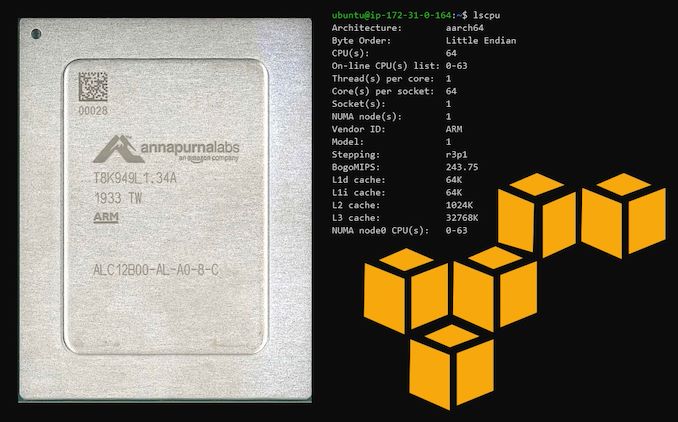
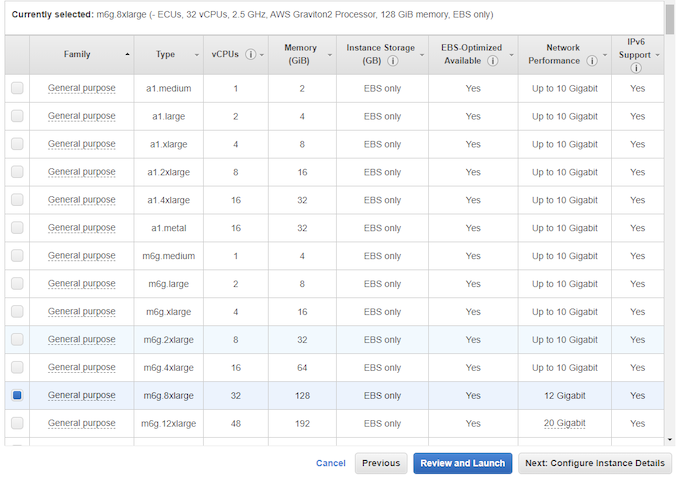

 Quote
Quote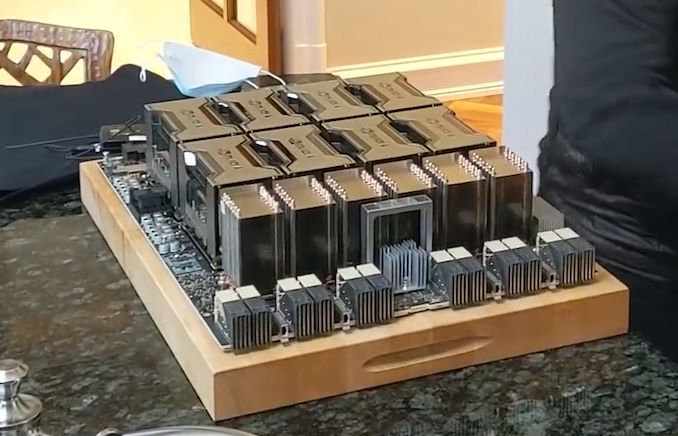
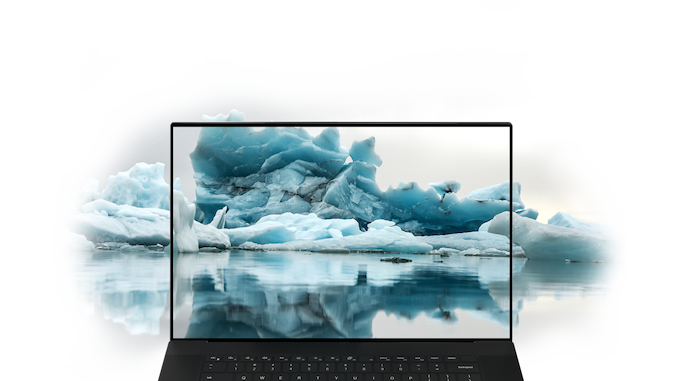

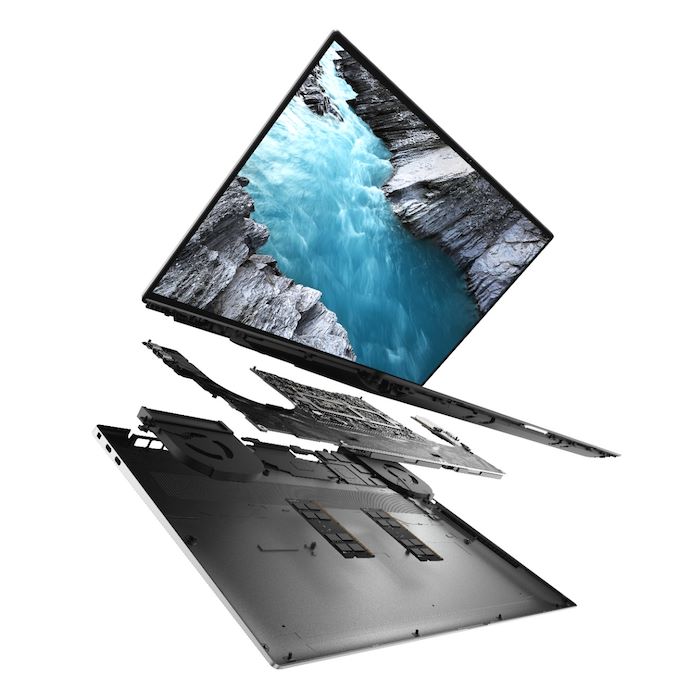
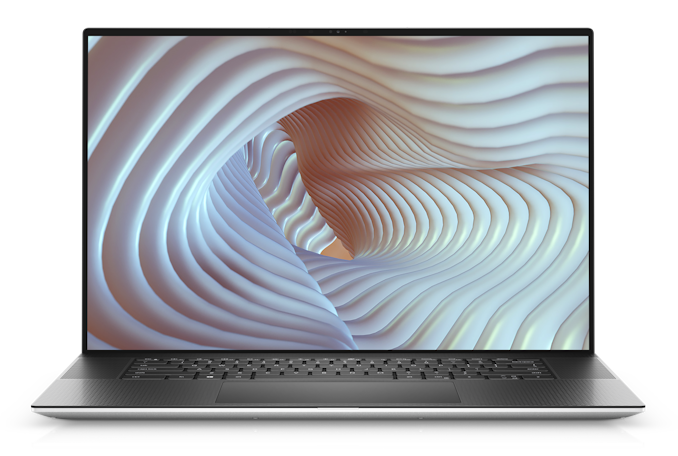
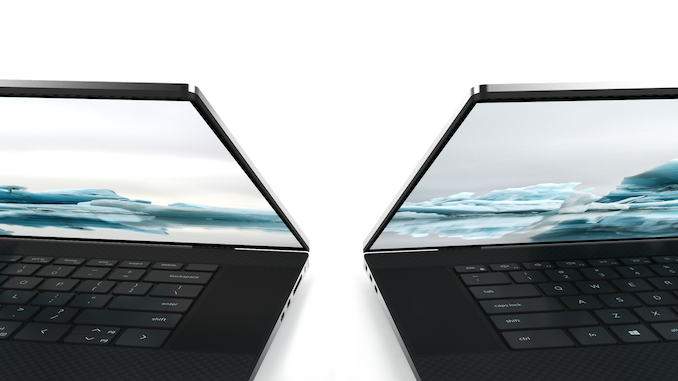
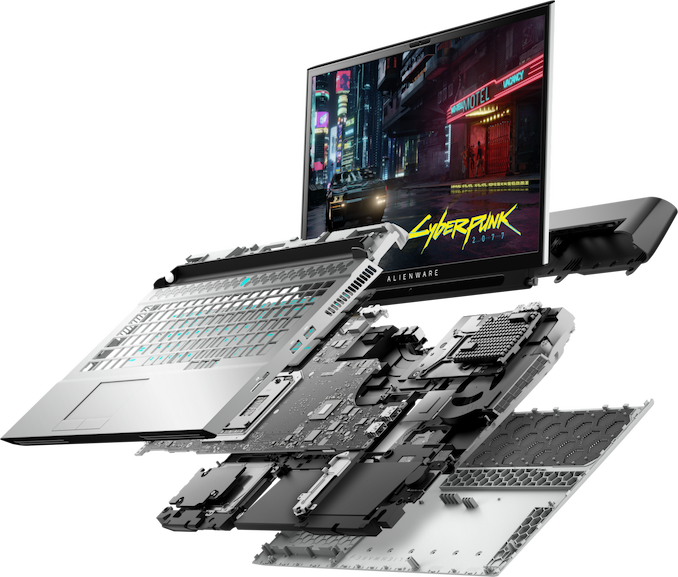
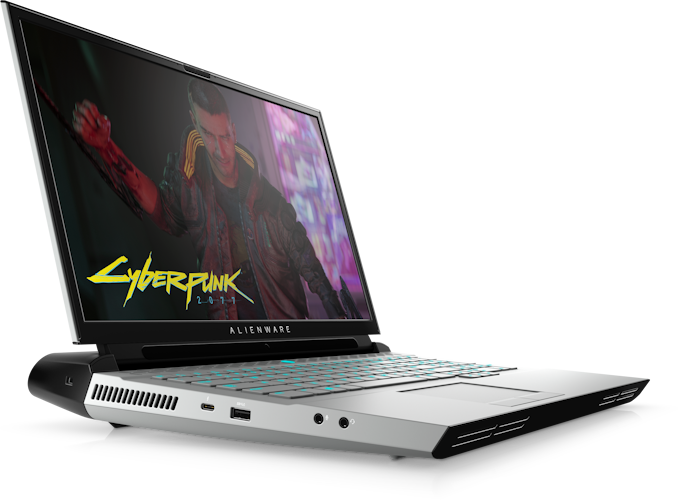

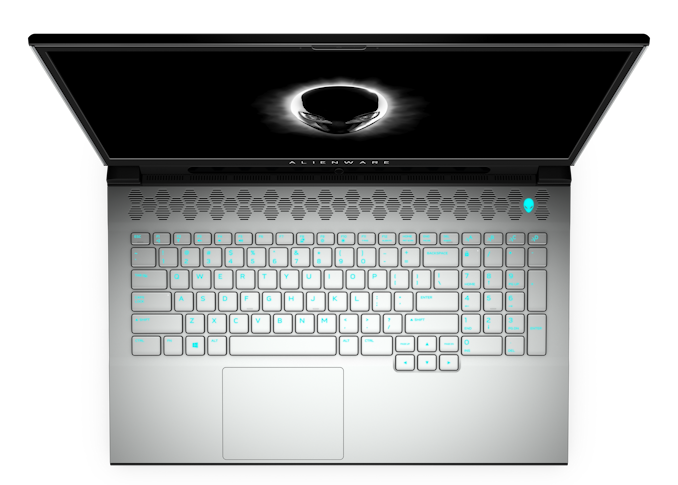

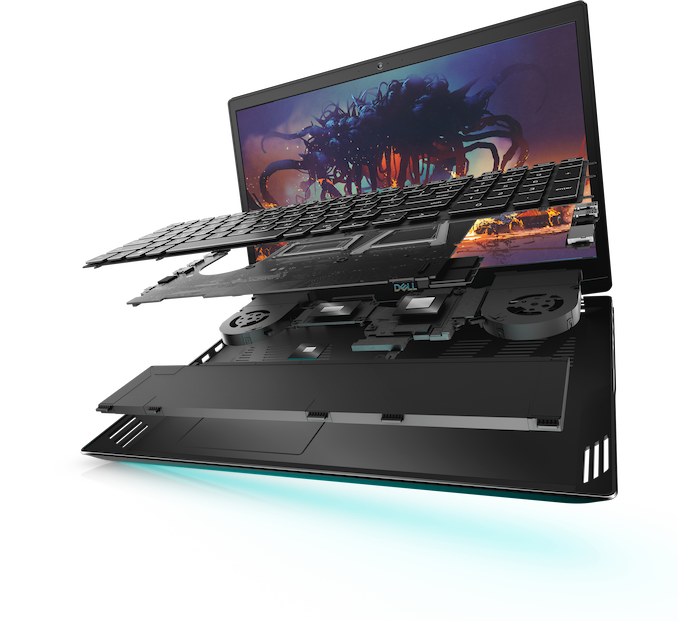
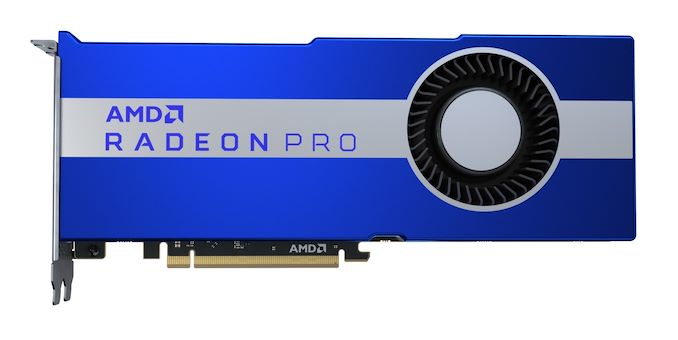
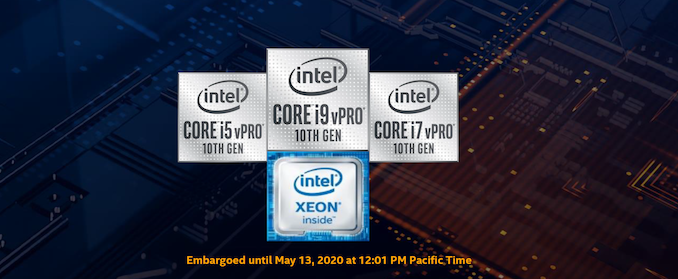
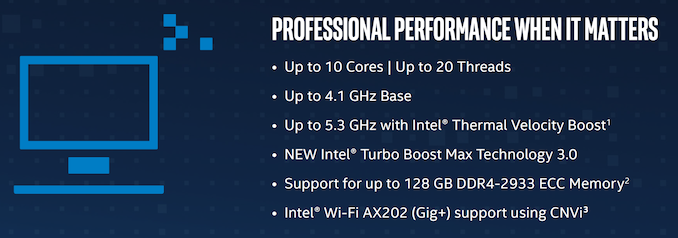

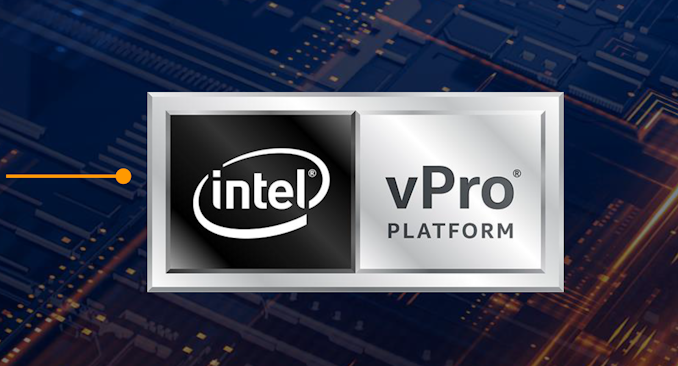
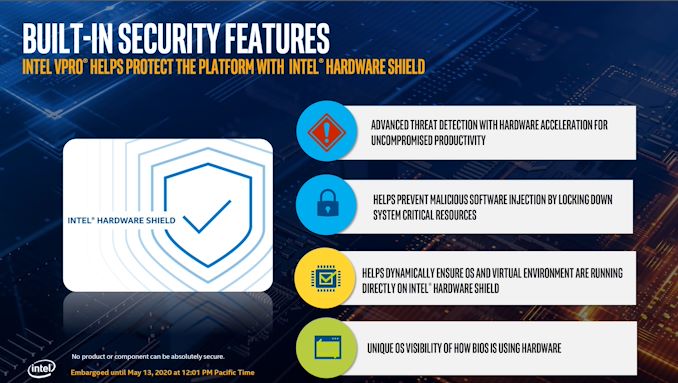
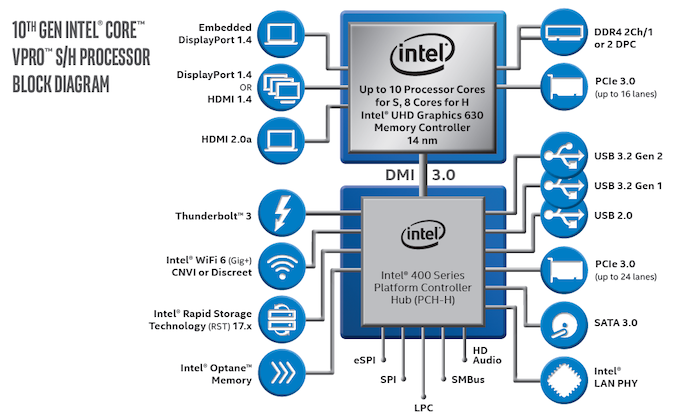
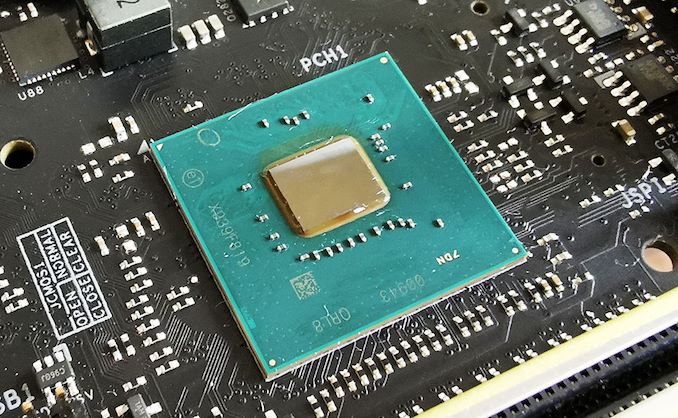

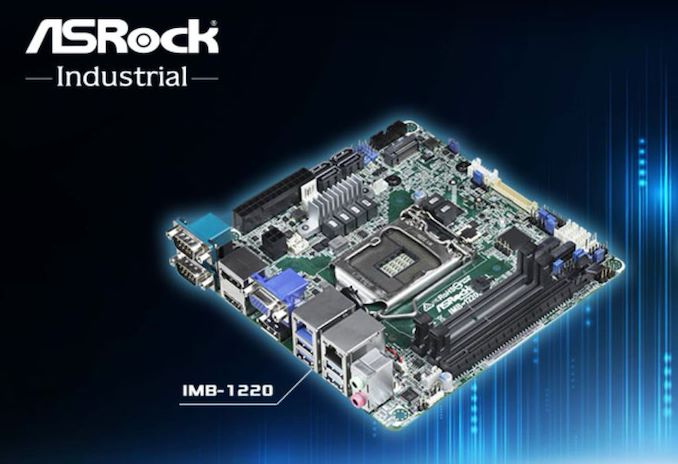
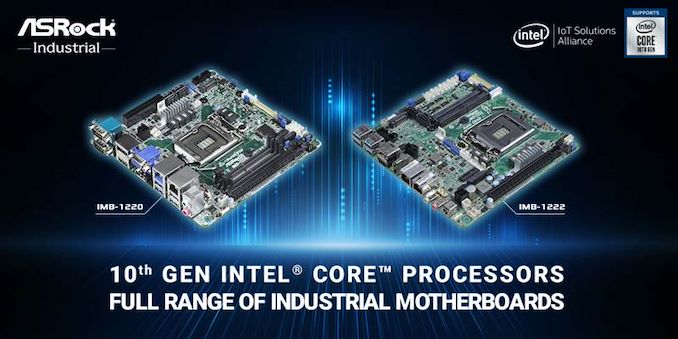
















Bookmarks